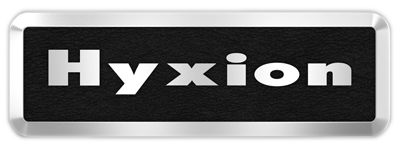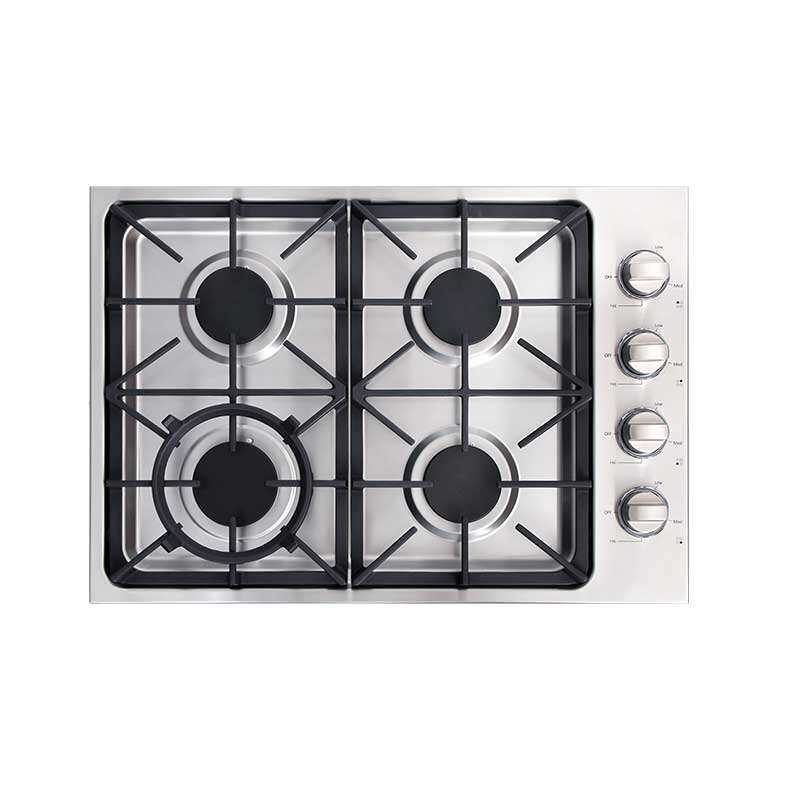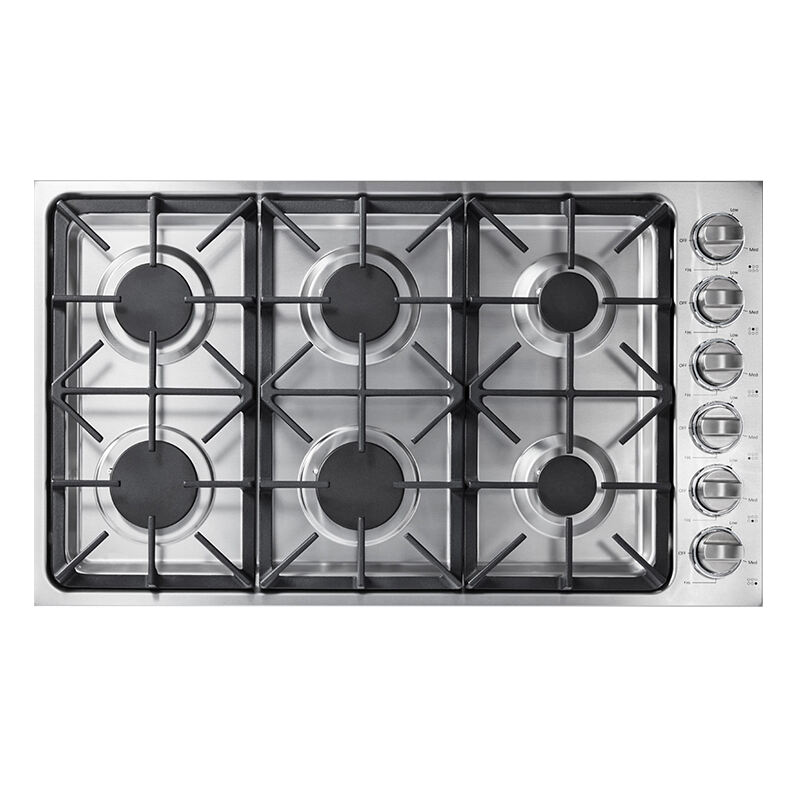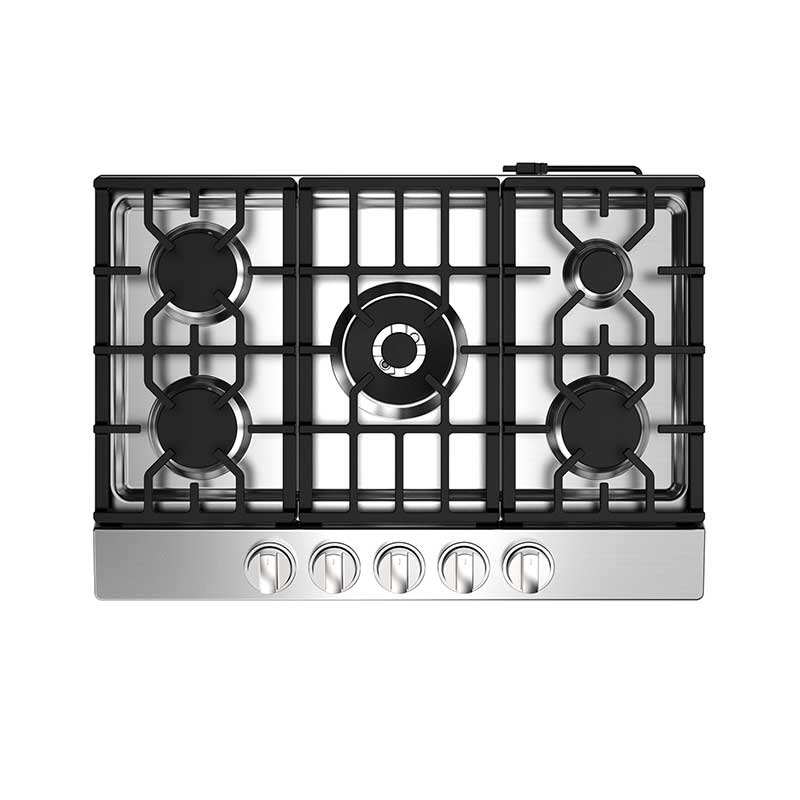Comparing Different Range Styles: Finding the Best Fit for Your Home
Understanding Range Styles: Gas vs Electric vs Induction
Gas Ranges: High Heat Control & Versatility
Gas ranges provide chefs with unmatched heat control and cooking flexibility, making them a go-to choice for professional kitchens. They allow cooks to make instant adjustments to temperature, which is crucial for precise cooking tasks such as searing meats or simmering delicate sauces. Gas ranges can accommodate various cooking methods, enhancing their versatility for different culinary tasks. A study from the American Council for an Energy-Efficient Economy supports this choice by noting that gas ranges often present lower operating costs compared to electric alternatives, reinforcing their efficiency in both heat control and cost.
Electric Ranges: Even Baking & Modern Aesthetics
Electric ranges have become popular in home kitchens due to their consistent heat delivery, ensuring that baked goods and roasts are cooked evenly. This reliability is particularly beneficial for baking applications, where precision is key to a perfect rise. The sleek, modern designs of electric ranges appeal to contemporary aesthetics, often featuring digital displays and touch controls that enhance their visual and functional appeal. Additionally, research indicates that electric ranges are safer with features such as auto shut-off, making them preferable in family households seeking increased safety in their cooking appliances.
Induction Ranges: Energy Efficiency & Safety
Induction ranges are key players in energy-efficient cooking, converting up to 90% of energy directly to heat, compared to the 40% efficiency of traditional gas. This remarkable efficiency translates into lower utility costs and a reduced environmental footprint. Safety is another notable advantage, as induction ranges heat only the cookware itself, minimizing the risk of accidental burns. With precise temperature control capabilities, induction ranges are particularly suited for tasks requiring delicate heat adjustments, such as melting chocolate or preparing intricate sauces. These features make them an attractive option for both safety-conscious and environmentally-minded consumers.
Key Features to Compare in Range Styles
Burner Power: BTU Ratings & Configuration
Evaluating burner power on your range involves examining the BTU (British Thermal Unit) ratings, which denote heat output capacity. A higher BTU rating often means more robust heat generation, crucial for quick searing or boiling. Configurations, such as ranges that feature a double oven or a mix of burner sizes, can augment cooking adaptability for various culinary tasks. Home cooks should align burner configurations with their cooking habits to ensure their specific requirements are met. This consideration is vital for tasks ranging from gentle simmering to intense frying.
Oven Types: Convection vs Conventional
Choosing between convection and conventional ovens can significantly impact cooking efficiency and outcomes. Convection ovens use fans to circulate hot air, promoting even cooking and allowing for reduced cooking times by roughly 25%. In contrast, conventional ovens depend solely on radiant heat from coils, which may lead to uneven cooking. Understanding these differences is essential to determine which oven type best aligns with your culinary style and needs.
Ventilation Needs & Installation Requirements
Proper ventilation is a critical aspect when using gas ranges, as it ensures safety and enhances indoor air quality by mitigating harmful emissions. Installation requirements also vary across different range styles, necessitating a consideration of kitchen layout and available ventilation options. According to the Environmental Protection Agency (EPA), installing a range hood can significantly reduce the risks associated with cooking emissions. Therefore, planning your kitchen's setup should entail examining both the ventilation and installation aspects for optimal efficiency and safety.
Hyxion Gas Cooktops: Premium Range Styles for Home Chefs
TGC3001: Compact 30-Inch Design with 18K BTU Burner
The TGC3001 model from Hyxion offers a compact design that is perfect for smaller kitchens, featuring an 18,000 BTU burner that doesn’t compromise on power. This high-heat burner makes it suitable for searing and stir-frying, providing the intensity needed for various cooking techniques. The cooktop ensures efficient use of space without sacrificing performance, making it a great choice for serious home cooks who value both functionality and style.
TGC3601: Spacious 36-Inch Layout for Multi-Pot Cooking
The TGC3601 is engineered for those who love multi-pot cooking, allowing chefs to prepare large meals or complex dishes at once due to its spacious 36-inch layout. This model includes multiple burners with varying BTU outputs, providing versatility to accommodate different cooking styles. With its generous layout, the TGC3601 is particularly suited for individuals who often host gatherings or need to cook multiple dishes simultaneously without compromise.
PGC30 & PGC36: Dual-Ring Burners for Precision Heat
The PGC30 and PGC36 models are equipped with dual-ring burners offering precision in heating, which significantly enhances temperature control. This design system caters to serious cooks who require finely tuned heat levels for delicate cooking tasks such as sauce preparation. Expert chefs often recommend dual-ring burners for their superior efficiency when transitioning between varying heat levels. These models are excellent choices for home chefs aiming for culinary excellence and versatile cooking solutions.
Choosing the Best Range Style for Your Kitchen
Assessing Kitchen Space & Cooking Habits
Before selecting a range style, it is critical to evaluate your kitchen's size and layout. A proper fit ensures the range complements the space visually and functionally. Additionally, understanding your cooking habits allows for a more tailored range selection, enhancing cooking efficiency. For instance, if you frequently prepare large meals, a model with multiple burners might be suitable. Experts suggest auditing your cooking methods and frequency to inform your choice. This approach ensures the appliance serves your lifestyle and optimizes your culinary experiences.
Budget Considerations: Entry-Level vs Pro-Style Models
When budgeting for a kitchen range, consider both the initial purchase cost and the ongoing operating expenses, as they can vary significantly. Entry-level models are perfect for basic cooking needs, offering functionality without excessive costs. In contrast, pro-style models provide advanced features ideal for serious chefs who demand high performance and versatility. According to appliance sales data, there is a growing trend toward high-end kitchen appliances, as more consumers invest in home cooking. This trend highlights the importance of balancing budget considerations with personal cooking demands.
Matching Range Styles to Design Aesthetics
A range's style should beautifully complement your existing kitchen decor, whether your theme is modern, traditional, or industrial. Advanced design features can enhance the visual appeal while maintaining kitchen functionality. For example, a sleek stainless steel finish might suit a modern kitchen, while a more rugged range could enhance an industrial theme. Industry trends indicate a rise in popularity for colorful ranges, offering personalization in kitchen design. Selecting a style that aligns with your decor not only enhances aesthetics but also elevates the overall cooking experience.

 EN
EN
 AR
AR
 BG
BG
 HR
HR
 CS
CS
 DA
DA
 NL
NL
 FI
FI
 FR
FR
 DE
DE
 EL
EL
 IT
IT
 JA
JA
 KO
KO
 NO
NO
 PL
PL
 PT
PT
 RO
RO
 RU
RU
 ES
ES
 SV
SV
 TL
TL
 IW
IW
 ID
ID
 LV
LV
 LT
LT
 SR
SR
 SL
SL
 SQ
SQ
 HU
HU
 MT
MT
 TH
TH
 TR
TR
 FA
FA
 MS
MS
 GA
GA
 IS
IS
 HY
HY
 AZ
AZ
 KA
KA




